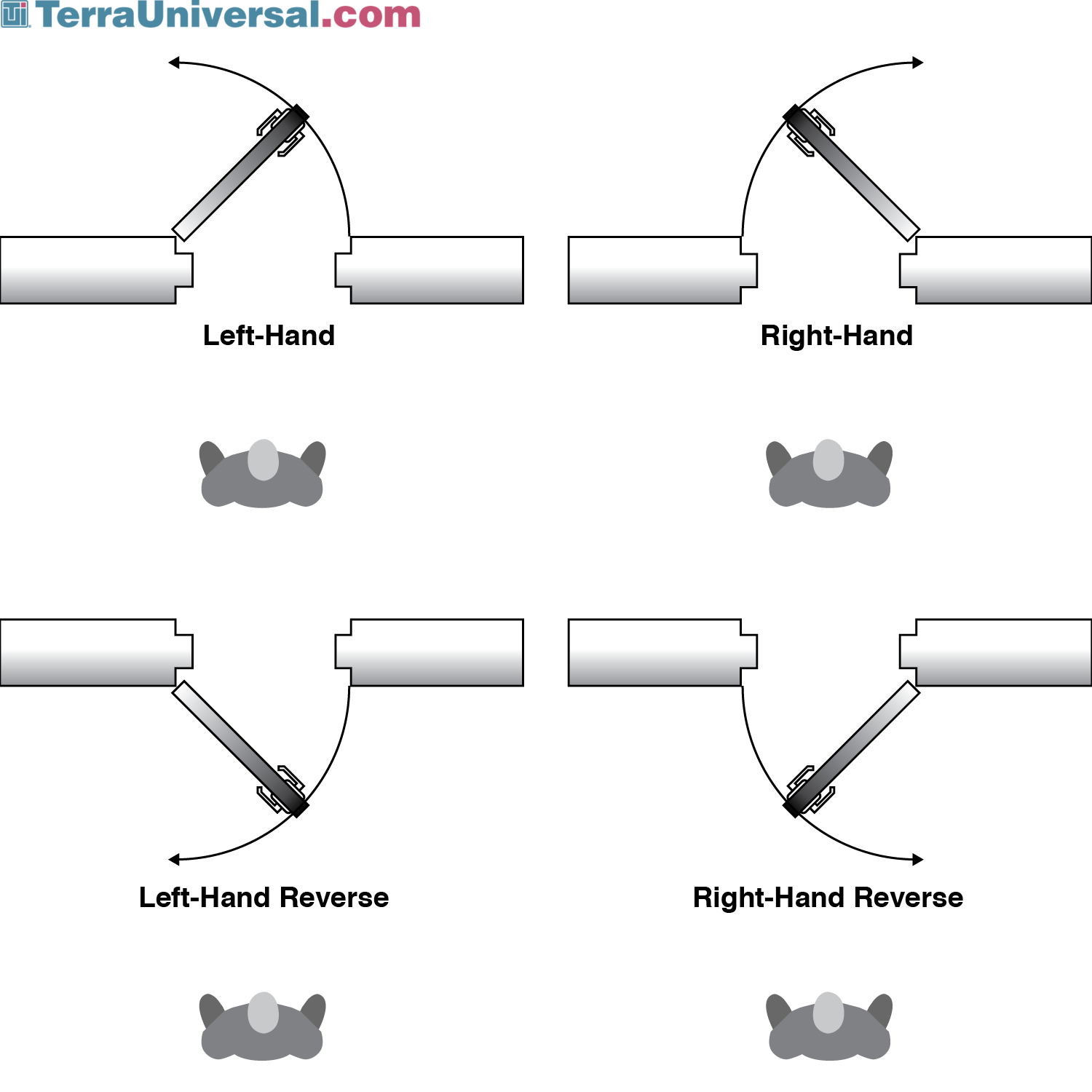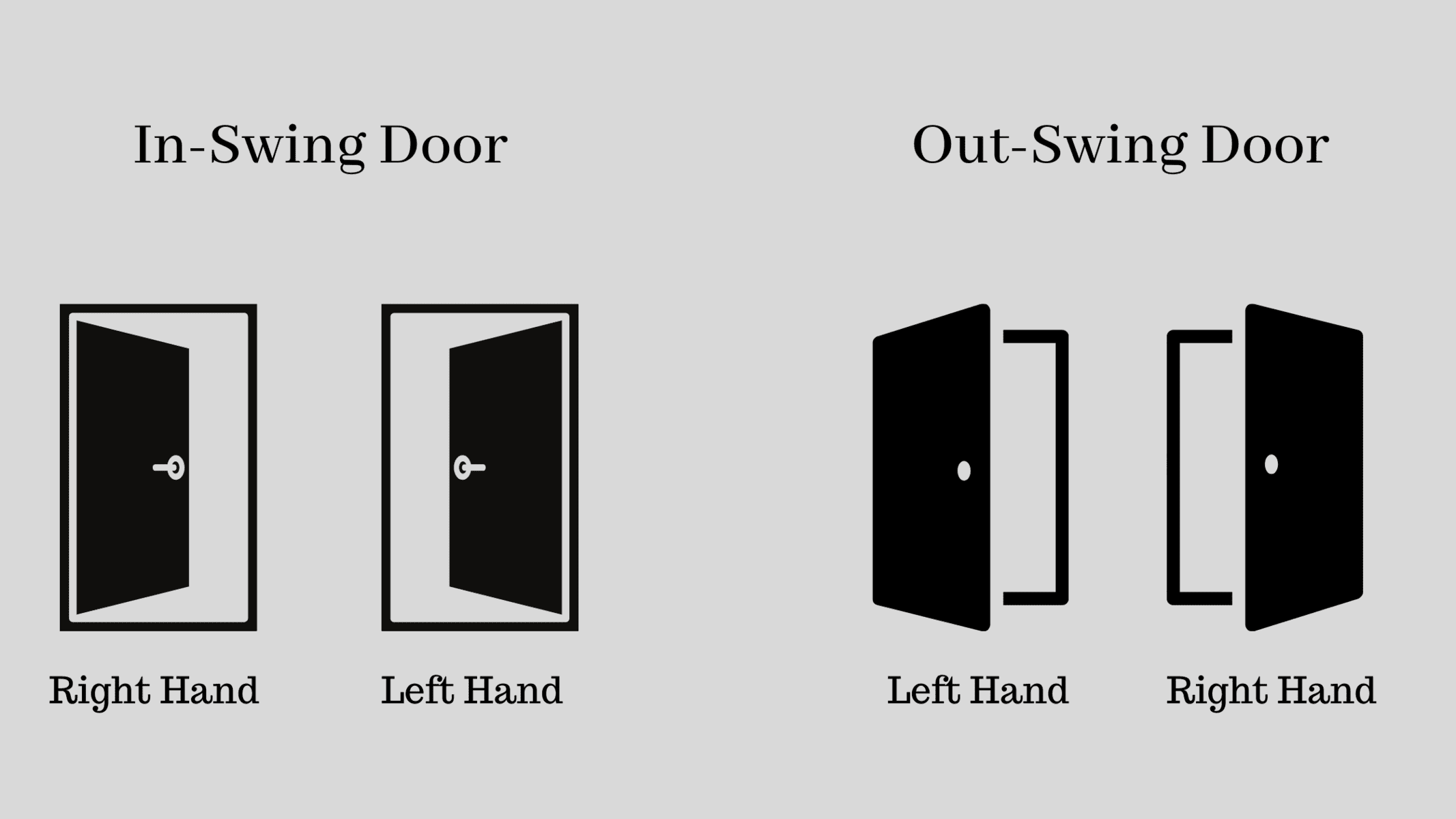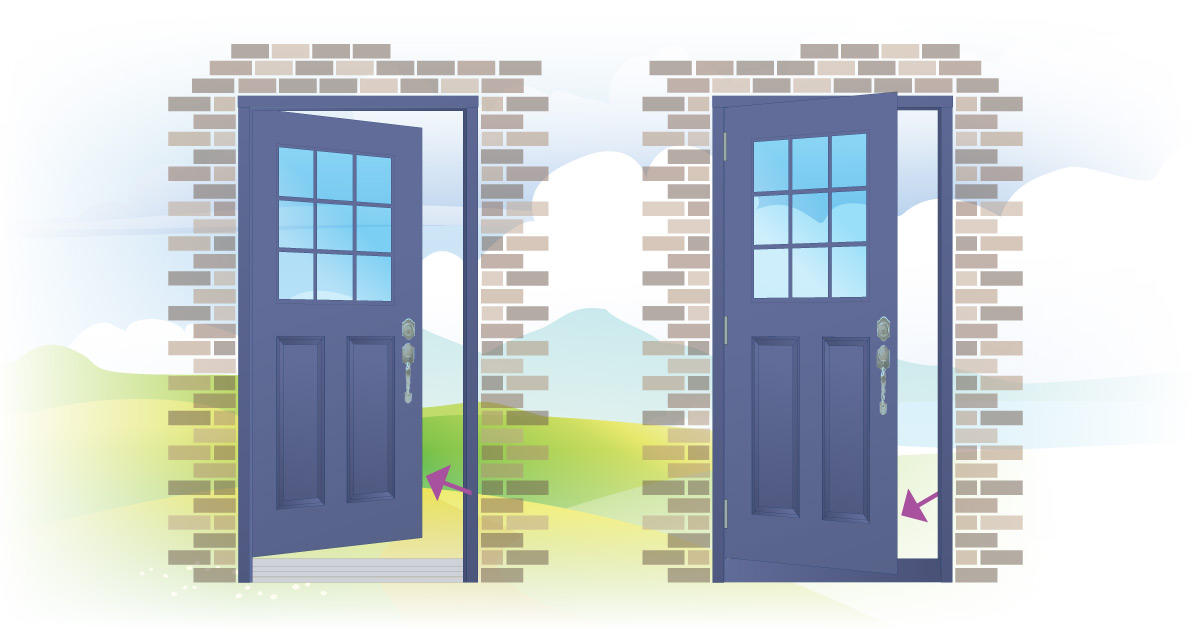Bedroom Door Swing: Which Way Should Bedroom Doors Open

The direction a bedroom door swings, whether inward or outward, can significantly impact the layout and flow of a room. This seemingly simple design choice has far-reaching consequences for the functionality and aesthetics of your bedroom.
Impact on Space and Flow
The direction a bedroom door swings can significantly impact the layout and flow of a room. Understanding the advantages and disadvantages of each option helps in creating a functional and aesthetically pleasing space.
Inward-Opening Doors
Inward-opening doors are the most common choice for bedrooms. They offer several advantages:
- Space Efficiency: Inward-opening doors maximize usable floor space by keeping the door within the room’s perimeter. This is especially beneficial in smaller bedrooms where every inch counts.
- Accessibility: Inward-opening doors provide easier access for individuals with mobility limitations or using assistive devices. The opening mechanism doesn’t require additional space beyond the door itself.
- Versatility: Inward-opening doors can be used in various bedroom configurations, including rooms with built-in furniture or limited wall space.
However, inward-opening doors also have drawbacks:
- Obstruction: Inward-opening doors can obstruct furniture placement or create a tripping hazard if not positioned carefully.
- Limited Space: Inward-opening doors can be problematic in small bedrooms or rooms with limited space, as the swing can impede movement or access to furniture.
- Safety Concerns: Inward-opening doors can be a safety hazard in emergency situations, particularly if the room is occupied by someone with limited mobility.
Outward-Opening Doors
Outward-opening doors offer several advantages:
- Enhanced Flow: Outward-opening doors create a seamless transition between the bedroom and the hallway, promoting a more open and spacious feel.
- Increased Accessibility: Outward-opening doors provide greater accessibility for individuals with mobility limitations or using assistive devices. The opening mechanism requires minimal space beyond the door itself.
- Safety Considerations: Outward-opening doors are considered safer in emergency situations as they don’t obstruct the doorway, allowing for quicker evacuation.
However, outward-opening doors also have drawbacks:
- Space Constraints: Outward-opening doors require additional space beyond the door itself, which can be problematic in smaller bedrooms or rooms with limited hallway space.
- Furniture Placement: Outward-opening doors can limit furniture placement, particularly if the door swings into a narrow hallway or corridor.
- Aesthetic Considerations: Outward-opening doors may not be aesthetically pleasing in all bedroom designs, particularly in traditional or formal settings.
Door Swing in Different Bedroom Sizes and Shapes
The impact of door swing on bedroom layout varies based on room size and shape.
- Small Bedrooms: In small bedrooms, inward-opening doors are generally preferred to maximize floor space. However, outward-opening doors can create a more spacious feel, especially if the hallway is wide enough to accommodate the swing.
- Large Bedrooms: In large bedrooms, either door swing can be used effectively. Outward-opening doors can enhance the room’s spaciousness, while inward-opening doors can provide a more traditional and familiar feel.
- Irregularly Shaped Bedrooms: In irregularly shaped bedrooms, careful consideration should be given to the door swing’s impact on the overall layout and flow. Outward-opening doors can be advantageous in creating a more open and inviting feel, while inward-opening doors can help to define different areas within the room.
Bedroom Layout with an Outward-Opening Door
- Bedroom Design: This bedroom layout features an outward-opening door, maximizing the sense of spaciousness and creating a seamless flow between the bedroom and the hallway. The door is positioned on a wall with ample space for its swing, avoiding any obstruction to furniture placement.
- Furniture Arrangement: The bed is placed against the wall opposite the door, creating a focal point and maximizing floor space. A dresser is positioned against the wall adjacent to the door, providing ample storage while maintaining a sense of openness.
- Lighting: Natural light is maximized by positioning a window opposite the bed. Additional lighting is provided by a bedside lamp and a ceiling fixture.
Ergonomics and Functionality

The way a bedroom door swings can significantly impact the overall functionality and user experience of the room. Choosing the right door swing is crucial for optimizing space, maximizing ease of access, and ensuring smooth movement within the bedroom.
Ergonomics of Different Door Swing Options, Which way should bedroom doors open
The ergonomics of door swings directly influence the ease of access and movement within the bedroom. A poorly chosen door swing can create obstacles, hinder traffic flow, and make the room feel cramped. Here’s a breakdown of the ergonomics of different door swing options:
- In-swing doors: In-swing doors, which open inward, are a common choice for bedrooms. They provide a clear opening when fully open, but they can be problematic in small bedrooms or when furniture is placed near the door. If the furniture is too close, the door may not fully open, creating a potential hazard.
- Out-swing doors: Out-swing doors, which open outward, offer a wider opening and are beneficial for larger bedrooms. However, they can be problematic in narrow hallways or spaces where the door could obstruct passage.
- Double doors: Double doors provide a wide opening and are aesthetically pleasing. However, they require more space to swing open, making them unsuitable for small bedrooms.
Functionality of Different Door Types
The functionality of different door types plays a significant role in bedroom design and utilization. The choice of door type should consider the room’s size, layout, and intended use. Here’s a discussion of the functionality of various door types:
- Sliding doors: Sliding doors are space-saving and ideal for small bedrooms. They slide along a track, requiring minimal swing space. Sliding doors are often used for closets or to separate areas within the bedroom.
- Pocket doors: Pocket doors disappear into the wall when opened, maximizing space and creating a seamless transition between rooms. They are particularly beneficial for smaller bedrooms or when a wide opening is desired.
- French doors: French doors are aesthetically pleasing and offer a wide opening. They are often used for bedrooms with access to a balcony or patio, creating a seamless transition between indoor and outdoor spaces.
Innovative Door Designs for Optimized Functionality and Space Utilization
Modern design trends are constantly evolving, and innovative door designs are emerging to optimize functionality and space utilization in bedrooms. Here are some examples of such designs:
- Barn doors: Barn doors are a popular choice for bedrooms, offering a rustic aesthetic and space-saving functionality. They slide along a track mounted on the wall, requiring minimal swing space.
- Folding doors: Folding doors are ideal for small bedrooms or when a wide opening is desired. They fold accordion-style, requiring minimal space to open.
- Automatic doors: Automatic doors are a modern and convenient option for bedrooms, offering hands-free operation. They are particularly beneficial for individuals with mobility challenges.
Comparison of Door Types for Bedrooms
| Door Type | Pros | Cons |
|---|---|---|
| In-swing | Common choice, clear opening | Limited space, furniture obstruction |
| Out-swing | Wider opening, suitable for larger bedrooms | Space requirement, hallway obstruction |
| Double doors | Wide opening, aesthetically pleasing | Large space requirement, not suitable for small bedrooms |
| Sliding doors | Space-saving, ideal for small bedrooms | Limited privacy, potential track issues |
| Pocket doors | Maximizes space, seamless transition | Installation complexity, potential noise |
| French doors | Aesthetically pleasing, wide opening | Expensive, space requirement |
| Barn doors | Rustic aesthetic, space-saving | Limited privacy, track maintenance |
| Folding doors | Wide opening, minimal space requirement | Limited privacy, potential track issues |
| Automatic doors | Hands-free operation, convenient | Expensive, potential technical issues |
Aesthetic Considerations

The direction a bedroom door swings can have a significant impact on the overall aesthetic of the room, influencing furniture placement, room decor, and the overall flow of the space. A well-chosen door swing can enhance the room’s visual appeal and create a harmonious atmosphere, while an ill-considered choice can disrupt the balance and create a cluttered or awkward feel.
Impact of Door Swing on Furniture Placement and Room Decor
The direction a door swings dictates the space it occupies when open, influencing where furniture can be placed and how the room is decorated. A door that swings inward might limit the placement of a large dresser or armoire near the entrance, while a door that swings outward might restrict the placement of a bed or seating area.
For instance, a bedroom with a door that swings inward might benefit from a smaller dresser placed perpendicular to the wall, allowing the door to open fully without obstruction. In contrast, a bedroom with a door that swings outward might be better suited for a larger dresser placed parallel to the wall, maximizing space utilization.
Examples of Different Door Styles and Their Complementarity to Various Bedroom Designs
Different door styles can complement various bedroom designs, creating a cohesive and visually appealing space. For example:
- Traditional bedrooms: Classic, paneled doors with intricate moldings and decorative hardware can enhance the traditional aesthetic, adding a touch of elegance and sophistication.
- Modern bedrooms: Sleek, minimalist doors with flush surfaces and minimal hardware can create a clean and contemporary look, complementing the modern design aesthetic.
- Rustic bedrooms: Reclaimed wood doors with distressed finishes and rustic hardware can add warmth and character to a rustic bedroom, complementing the natural elements and earthy tones of the design.
Design Guidelines for Choosing the Appropriate Door Swing Based on the Room’s Aesthetic and Furniture Arrangement
Choosing the appropriate door swing for a bedroom involves considering the room’s aesthetic, furniture arrangement, and the desired flow of traffic.
- Space constraints: Consider the available space and the placement of furniture. A door that swings inward might be better suited for smaller bedrooms, while a door that swings outward might be more suitable for larger bedrooms.
- Furniture placement: Ensure the door swing does not obstruct the placement of essential furniture pieces, such as the bed, dresser, or seating area.
- Traffic flow: Consider the direction of traffic flow in the bedroom. A door that swings inward might create a bottleneck, while a door that swings outward might allow for easier movement around the room.
